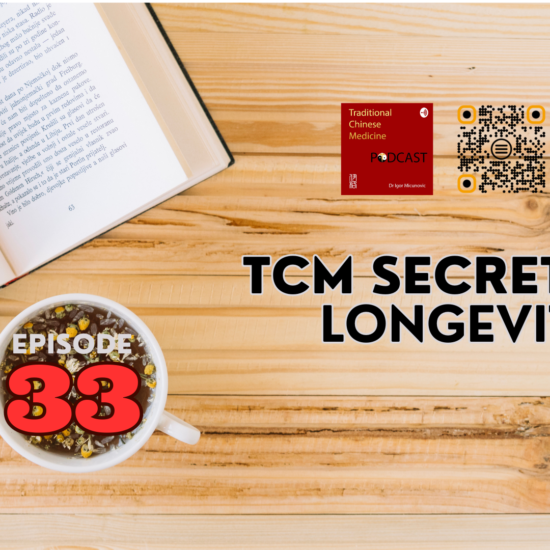Fascia
A fascia, from Latin “band” is a generic term for macroscopic membranous bodily structures. Fasciae are passive structures that transmit mechanical tension generated by muscular activities or external forces throughout the body. An important function of muscle fasciae is to reduce friction of muscular force. In doing so, fasciae provide a supportive and movable wrapping for nerves and blood vessels as they pass through and between muscles. Fascial tissues are frequently innervated by sensory nerve endings.
Fascial tissues – particularly those with tendinous or aponeurotic properties – are also able to store and release elastic potential energy.
Fascia is a thin membrane that connects all parts of the body. Fascia helps body to operate in space, which allows complex movements. It surrounds our organs and holds them in place by suspending them from the spine. To be able to communicate effectively across the body tissue, fascia must be smooth and free. If not smooth, the result will be pain and poor range of motion.
Fascia is a band or sheet of connective tissue, primarily collagen, beneath the skin that attaches, stabilizes, encloses, and separates muscles and other internal organs – weaving throughout our entire body. Like ligaments, aponeuroses, and tendons, fascia is made up of closely packed bundles of collagen fibers, oriented in a wavy pattern parallel to the direction of pull.
Fascia lines have some overlap with the meridians of acupuncture, but the two are not equivalent. These lines of pull affect the structure and function of the body. Through injury or compensations, unique strains and connections may start to redefine these lines.
In other words, our body reshapes itself depending on the forces it’s repeatedly subject to. In bones osteoblasts cells fortify bone along lines of mechanical stress. When the fascia is stressed, fibroblasts produce collagen to create stronger connective tissue. When the continuity of our fascial system breaks down, we suffer injury, pain, and tightness.
Fascia is the reason we are uniquely human shaped. It is the reason you can have a lot of muscles in the same space, yet the muscles are able to slide past each other and have independent function. As we lose flexibility and the ability of tissue to slide and glide, the viscosity of fascia changes from supple running fluid – to honey – to glue – to dry strands. Therefore, our bodies need the movement to maintain optimal metabolism and circulation to the tissues.
Fascia becomes important clinically when it loses stiffness, becomes too stiff, or has decreased shearing ability. When inflammation or trauma causes fibrosis and adhesions, fascial tissue fails to differentiate the adjacent structures effectively. This can happen after surgery, where the fascia has been incised and healing includes a scar that traverses the surrounding structures.
Activities like yoga or qigong, which stretch, lengthen and rhythmically pump and release the myofascial chains not only help prevent painful buildup of metabolic waste and stagnation of fluids, salts, etc., but they also encourage regulation of the nervous system, immune system, endocrine system, cardiovascular system, and digestive system through healthy cellular metabolism and circulation.
Interstitium
Interstitium represents a specific dense wall of collagen organized in network of fluid-filled spaces in connective tissues all over the body, including below the skin’s surface; lining the digestive tract lungs and urinary systems; and surrounding muscles. The spaces of the interstitium are filled with hyaluronic acid, which has a high capacity to hold water, creating a gel.
A network of dense connective tissues and fluid-filled compartments called the interstitium is a full-fledged organ — that is, a group of tissues with a unique structure performing a specialized task, like the heart or the liver.
The human body is about 60% water. About two-thirds of that water is found inside cells, but the other third or about 20% is outside cells and is known as “interstitial” fluid, a Latin word combining “inter,” or “between,” and “sistere,” or “to place” — literally, “between the other places.”
The interstitium is a contiguous fluid-filled space existing between a structural barrier, such as a cell membrane or the skin, and internal structures, such an organ, including muscles and the circulatory system. The fluid in this space is called interstitial fluid, comprises water and solutes, and drains into the lymph system. The interstitial compartment is composed of connective and supporting tissues within the body – called the extracellular matrix – that are situated outside the blood and lymphatic vessel and the parenchyma of organs.
These fluid-filled spaces were discovered in connective tissues all over the body, including below the skin’s surface; lining the digestive tract, lungs and urinary systems; and surrounding muscles.
The tissue contains interconnected, fluid-filled spaces that are supported by a lattice of thick collagen bundles.
These fluid-filled spaces are a source of a fluid called lymph and drain into the lymphatic system.
The interstitial fluid is a reservoir and transportation system for nutrients and solutes distributing among organs, cells, and capillaries.
Fluid flowing across the capillary walls must cross the interstitial spaces between parenchymal cells to gain access to the lymphatic vasculature for subsequent return to the vascular system. Interstitial flow may influence the formation of new lymphatic vessels in regenerating tissues.
The total healthy fluid volume of the interstitium is about 20% of body weight, but this space is dynamic and may change in volume and composition during immune responses and in conditions such as cancer, and specifically within the interstitium of tumors. The amount of interstitial fluid varies from about 50% of the tissue weight in skin to about 10% in skeletal muscles.
In addition to cushioning, the interstitium may have another important job. While it was known that interstitial fluid is the major source of lymph fluid, which carries immune cells throughout the body.
Cancers, such as melanoma, can spread via the interstitium.
Interstitium may become visible on the radiographs if it is distended by space-occupying lesions (e.g., blood, edema, pus, tumor) or thickened in response to such disorders as connective tissue disorders.
Recent investigations have revealed that the interstitial space plays an active role, in addition to the kidney, in the regulation of salt and water balance in the body including blood pressure.
TCM and the Interstitium
In traditional Chinese medicine (TCM) existence of facia and interstitium has been known for thousands of years. Chinese call it San Jiao (Chin. 三焦) and consider it an organ. In English is translated as “Triple Burner”.
In TCM, Triple Burner is responsible for various functions including dividing the body cavity into different compartments, and properly distributing fluid throughout the body.
The Triple Burner is responsible for the maintenance of the ditches; and it controls all water in the body.
Triple Burner is the sum of systemic connective tissues, which wraps around and supports the various body tissues.
TCM classifies triple heater into upper, middle and lower parts according to their functions. The upper part completes the function of the chest viscera, including the heart and lungs; the middle part completes the visceral function of the abdomen above the umbilicus, including the stomach, spleen, liver, gallbladder, pancreas and small intestine; and the lower part completes the visceral function of the abdomen and pelvic cavity under the umbilicus, including kidney and bladder.
Triple Burner is membranous shaped. It is one of the six Fu viscera of the human body and is one of twelve meridians. Triple Burner meridian is both a meridian and a triple burner membrane system.
TCM and Modern Physiology
There is recent discovery which proves ancient Chinese knowledge of physiology. During 2018 researchers found a new link between the lung and the intestines through type 2 innate lymphoid cells (ILC2). ILC2s derive from a common lymphoid progenitor and belong to the lymphoid lineage. Researchers have demonstrated that ILC2s can be recruited from the gut to the lung and other organs in response to inflammatory signaling. This ILC2 gut-lung axis becomes vital for understanding the link between disturbances in the intestinal microbiota and lung diseases such as asthma and chronic obstructive pulmonary disease (COPD). Increasing evidence shows an extraordinarily intimate relationship between the gastrointestinal tract and the respiratory tract.
Studies demonstrated that changes in microbial composition and function in the respiratory tract and the gut have been linked to alterations in immune responses and to disease development in the lungs. These studies prove that exacerbations of chronic gut and lung disease share key conceptual features with the disorder and dysregulation of the microbial ecosystem.
That the lung and large intestines have an interior/exterior connection is a major traditional Chinese medicine foundation. These two organs are functionally interconnected in TCM physiology, which implies that lung diseases can be treated from the large intestine perspective, and that large intestine diseases can be treated from the lung perspective. The gut-lung axis discovered in this research provides new evidence to back up this ancient principle of TCM medical practice.
Platelets are pieces of cytoplasm that are derived from the megakaryocytes of the bone marrow. They are critical to hematological functions such as hemostasis, thrombosis, and inflammatory responses. Medical science has long held that megakaryocytes, and therefore platelet production, are normally centered exclusively in the bone marrow.
A recent study provides evidence that the lung is involved to a large degree in platelet biogenesis. The study describes a distinct mechanism of proplatelet release from intravascular megakaryocytes of extrapulmonary origin in the lung microcirculation. Careful analysis of the resulting data revealed that the lung is also a primary site for platelet production. In fact, lung megakaryocytes can completely reconstitute platelet counts in the blood of mice with thrombocytopenia. They discovered that many megakaryocytes circulate through the lungs where they dynamically release platelets. These platelet-releasing megakaryocytes are of extrapulmonary origin, such as the bone marrow, where large megakaryocytes were observed migrating out of the bone marrow. Furthermore, the researchers discovered that the lung’s contribution to platelet biogenesis is substantial, with approximately 50% of total platelet production, as well as identified populations of mature and immature megakaryocytes along with hematopoietic progenitors that reside in the extravascular spaces of the lung. When there is a disease condition of thrombocytopenia and relative stem cell deficiency in the bone marrow, these progenitors can migrate out of the lung, repopulate the bone marrow, completely reconstitute blood platelet counts, and contribute to multiple hematopoietic lineages.
These new discoveries citing the lung as a primary site of terminal platelet production and an organ of hematopoiesis have implications for the treatment of disorders such as lung inflammation and other inflammatory conditions, bleeding and thrombotic disorders, and transplantation.
This study has a resonance with the traditional understanding of lung dynamics in TCM. In TCM theory, the fluid generated from food digestion in the spleen and stomach is supplied to the lung collaterals, where the fluid and “clear qi” are combined and transformed into blood. Lungs control all the body’s collaterals and qi. The qi dynamic and blood circulation depend on the dissemination and regulation of Lung qi.
Since qi both generates and controls blood, it is commonly used treatment strategy in TCM to generate and control blood by tonifying qi.
It seems that TCM Is becoming more relevant by adopting principles of modern medicine, while modern medicine is systematically validating TCM principles.
Acupuncture Meridian System and Interstitium
Acupuncture meridians are believed to form a network throughout the body, connecting peripheral tissues to each other and to central viscera interstitial connective tissue also fits this description. Interstitial “loose” connective tissue constitutes a continuous network enveloping all limb muscles, bones, and tendons, extending into connective tissue planes of pelvic and shoulder girdles, abdominal and chest walls, neck, and head. This tissue network is also continuous with more specialized connective tissues such as periosteum, perimysium, perineurium, pleura, peritoneum, and meninges. A form of signaling (mechanical, bioelectrical, and/or biochemical) transmitted through interstitial connective tissue, therefore, may have potentially powerful integrative functions.
Many factors in our daily life – including poor postural habits, stress-induced muscular tension, limited movement, injury and dehydration – can cause velcro-like adhesions to form within the fascia, “gluing” muscles together and restricting their ability to perform their individual functions.
Using proprietary treatment approach first step is to identify the pattern of focal adhesions where the fascia has collapsed in and is stuck together.
After identification of this pattern, might be applied various treatment methods; like deep tissue restoration, manual therapy, and the use of acupuncture/dry needling with aim to cause a chemical reaction in the cells, and to allow the interstitium and its compartments to spring back to life, getting your tissues to glide effortlessly over one another as they are meant to.
In acupuncture, the connective tissue is the link between the needle and the sensory nerve endings – the signal that gets transmitted to the brain. The needle is a mechanical cue that stimulates a chemical reaction (impacting the musculoskeletal, nervous, and immune system) through the tissue. Cells in the connective tissue, particularly fibroblasts, respond when you manipulate the needle. Research shows that fibroblasts change shape – which is critical for healing.
When muscle or tissue is injured or strained as a result happens decrease of oxygen, there is an accumulation of calcium, congealed fluids, poorly circulating substances (blood, lymph, watery substance in the fascia) that are creating dysfunction in the muscle cells, leading to chronic spasm and of course, pain.
This persistent stress of the muscles and connective tissues leads to abnormal over-stimulation to the nerves in the areas. Acupuncture is excellent at breaking up the physical stickiness and encouraging focused increase of blood, lymph, and fluid circulation, flushing out calcium, inflammatory compounds, and other metabolic waste. Meanwhile, new oxygen, nutrient-rich blood, and fluids rush back in.
We are using acupuncture to turn off nerves that are over-stimulated or turn on nerves and related muscles that have been restricted and underutilized. We know from researches into the mechanism of acupuncture, that stimulation of the peripheral nervous system causes changes in the central nervous system to regulate pain signals, along with many other regulatory reactions, simply by gently stimulating the complex interwoven layers of nervous, vascular, myofascial, and lymphatic tissues.
Tensegrity and the body
Like ligaments, aponeuroses, and tendons, fascia is made up of closely packed bundles of collagen fibers, oriented in a wavy pattern parallel to the direction of pull. Fascia is consequently flexible.
This architectural structure is based on the relationship between tension and compression – they work in complementary forces. Buckminster Fuller is the man who designed the floating tensegrity model in the 1960s to help explain this concept. Tensegrity systems share the burden of absorbing force so that any one part will influence the whole.
However tensegrity was invented firstly by a Soviet scientist Karlis Johansons in 1921.
Biotensegrity, a term coined by Stephen Levin, is an extended theoretical application of tensegrity principles to biological structures. Biological structures such as muscles, bones, fascia, ligaments and tendons, are made strong by the unison of tensioned and compressed parts.
The body is at least responding like a tensegrity structure, and many of us believe that it is operating as a tensegrity structure. Tensegrity as the most efficient use of materials to enclose a volume in a highly adaptable manner.
All structures balance tension with compression – the yin and yang of biomechanics.
Fascial continuity suggests that the myofascia acts like an adjustable tensegrity around the skeleton – a continuous inward pulling tensional network like the elastics, with the bones acting like the struts in the tensegrity model, pushing out against the restricting ‘rubber bands’. Bones represent compression struts and fasciae are myofasciae as the surrounding and investing tension members.
Tensegrity mathematics, however, works off 60° angles, realising that triangles are the only universally stable structures, while squares and other polygons allow mobility.
There’s a lot of data that’s being transmitted through fascia, its like if you had a taut suspension cable, tap one end and the vibration will travel to the other. Every time a force is applied to the body it is transmitted through this web to be processed. For example “retinaculum” is used to describe the fascia of the wrist and is involved in the dreaded carpal tunnel syndrome, or “aponeurotic” tissue which can be found over the low back and is associated with that achy back pain of yours. It’s all ways of classifying the fascia. It’s in these tissues where a lot of free nerve endings exist that are constantly monitoring the body, where, for example, the wrist is in relation to the elbow. How one muscle is contracting so its opposing muscle can relax for things to move smoothly.
The interstitium could change the way we observe many functions within the body, and it’s also the space where the tip of the needle goes during acupuncture, which might be one of the reason why acupuncture is effective.


